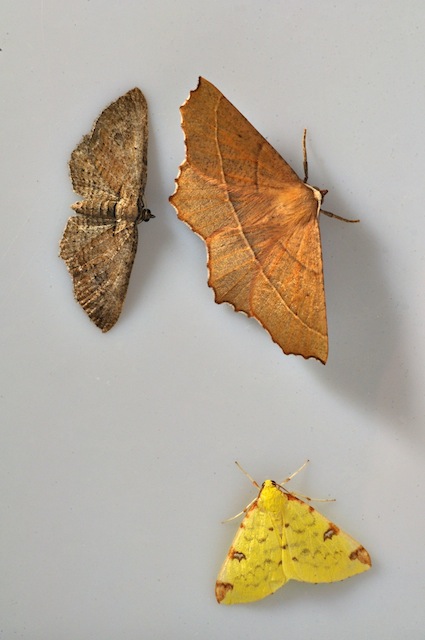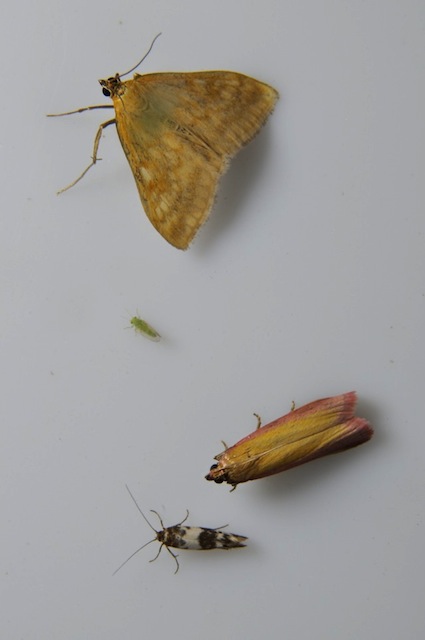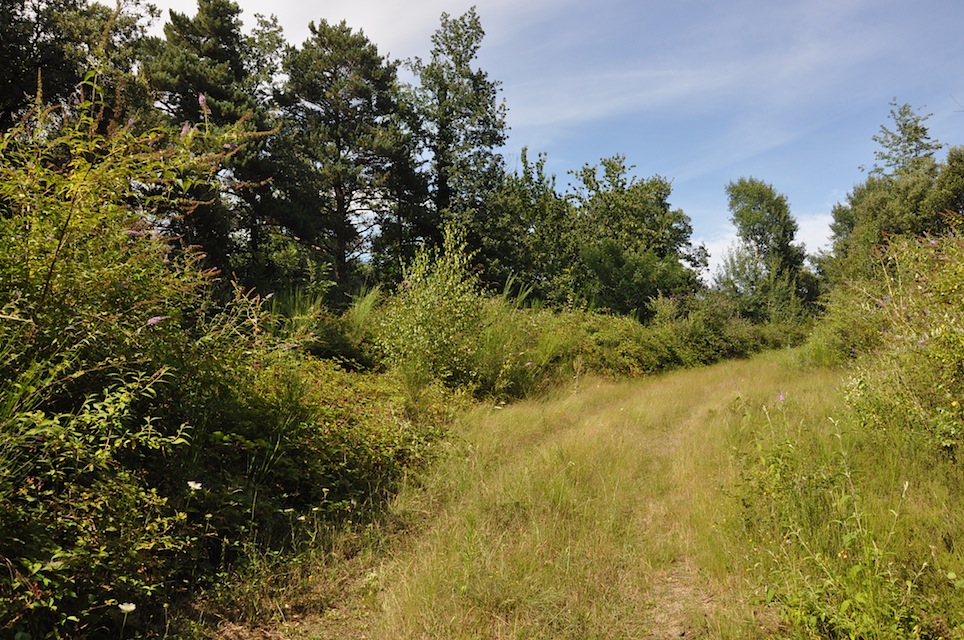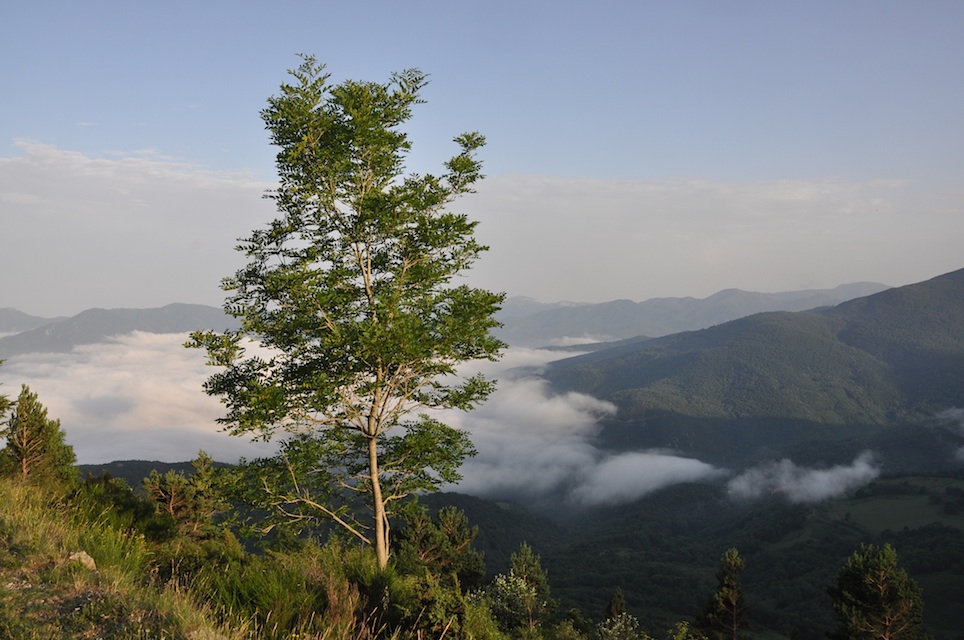Foreword - Introduction, Habitat, Species, Identification
Butterflies, Moths, Micro-moths



The Butterflies and Moths of Corsavy and Montferrer



In the summer of 2017, I visited the Tropique du Papillon in Elne in France.
The Tropique has a wonderful tropical butterfly house, that I can recommend to visit.
Outside the butterfly house, a garden has been created with plants that are attractive to butterflies.
In spite of the effort put into it, not many butterflies can be found in the outside garden, not even on the ever popular Buddleja davidii (butterfly-bush).
The problem is ..... the agriculture around Elne, using pecticides killing butterflies and their caterpillars.
This is the sad story. Where human “culture” is at work, the butterflies and moths
disappear.
They find a last resort in the mountains and in areas where not many people live.
They can only survive where there are no
disrupting human activities.
This website covers the mountain-villages Corsavy and Montferrer in the French Pyrénées-Orientales, that still have a rich butterfly fauna.

Butterflies need light, the sun to warm up and flowers to feed nectar from.
When we speak of a primeval forest, we think of it as a dense and dark forest.
On the contrary, a primeval forest contains exactly those bordered open spaces that butterflies need.
This is true also for those species whose habitat is the forest.
But with the destruction of primeval forests and the planting of uniform dense coniferous forests, butterflies have come to depend on
bordered open spaces in cultural landscapes and on their
proper management
(pdf).
And indeed, in Corsavy and Montferrer we find most butterflies:
• along forest paths, roughly kept open without giving it too much attention, not treating it as a bourgeois garden.
• on fields that are grazed (but not overgrazed) like on the open and half-open spaces around the Col de la Descargue
• on rocky locations, that are naturally open or half-open
• on sites with tall grass, like on the campsite under the previous owner
Another factor are the clouds gathering around the Canigou (2784 m).
The French Pyrenees have substantially more rain than the Spanish side has.
Around Corsavy at higher altitudes, various small mountain streams can be found and a few short waterfalls.

Corsavy and Montferrer are located in the Pyrénées-Orientales in France.
That province has 186 recorded
butterfly species and 1541 recorded moth species.
You will find 104 butterfly species on this website, 3 of them with a question mark attached to their identification.
Furthermore, about two hundred moth species.
Probably, many more species of moths live in the Corsavy and Montferrer area than I have photographed up of now.
With regards to butterflies, the following species that I didn't encounter yet, have been spotted for
Corsavy and
Montferrer.
• Anthocharis euphenoides (Provence Orange-tip)
• Charaxes jasius (Two-tailed Pasha)
• Cupido argiades (Short-tailed Blue)
• Nymphalis polychloros (Large Tortoiseshell)
• Polyommatus thersites (Chapman's Blue)
Melitaea nevadensis is now considered a separate species, but it is difficult to differentiate it from the Heath Fritillary (Melitaea athalia)
• Melitaea (celadussa) nevadensis
I saw the following species (I think) without a photo to prove it:
• Thecla betulae (Brown Hairstreak), on a walk without a camera, stupid me
Assuming all identifications are correct, for Corsavy and Montferrer this sums up to a total of 111 butterfly species.
That's twice the number of butterfly species in the Netherlands !

Several species on this website have a note that they
• resemble another species, or
• are difficult to distinguish from another species, or
• are indiscriminate from another species.
This concerns visual identification, like from a photo.
A precise identification is always possible from DNA or by inspecting the genitals.
But I will leave that to scientists.
The problem with difficult-to-distinguish species is that the natural variation in a species can be greater than the sometimes vague visual
characteristics that differentiate it.
The probability that the identification (based on visual characteristics only) is correct is 50 to 70 % in
this field research.
Even with resembling species that do have clear determination characteristics, the certainty of the identification may not be absolute.
In this field research
comparing the Scarce Swallowtail and the Southern Scarce Swallowtail, the certainty of the visual identification is 85 to 95 %.
An identification gains confidence when other aspects are evaluated, like:
• the date the butterfly or moth has been spotted, in relation to its known flight time
• the area where and the altitude at which it is was seen, in relation to its distribution map and known altitude range
• the kind of landscape the butterfly, moth or caterpillar was seen, in relation to its know habitats
• the visual appearance of the caterpillar
• the plant on which the female lays its eggs, in relation to its known host plant
None of these aspects alone are absolute, but together they may form a good identification.
For some species on this website, a question mark has been added to the species name under a photo, or an alternative species has been given.
The author welcomes feedback. Note that a subspecies name may complete the Latin species name under a photo.
The first name in the Latin nomenclature is the genus, the second the species within the genus and the optional third the
subspecies within the species. For example Lycaena alciphron gordius.
Comments can be sent by email to
adriaan@adriaan.biz
or by posting on the
Facebook
page that accompanies this website.
